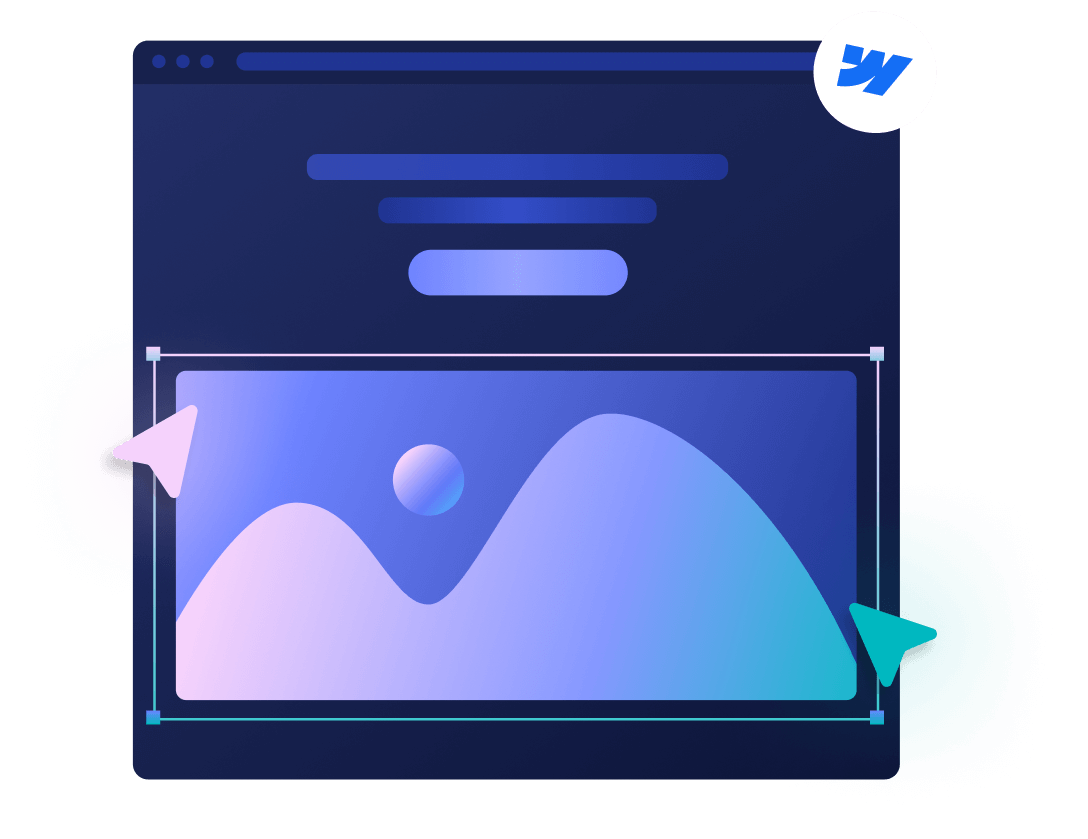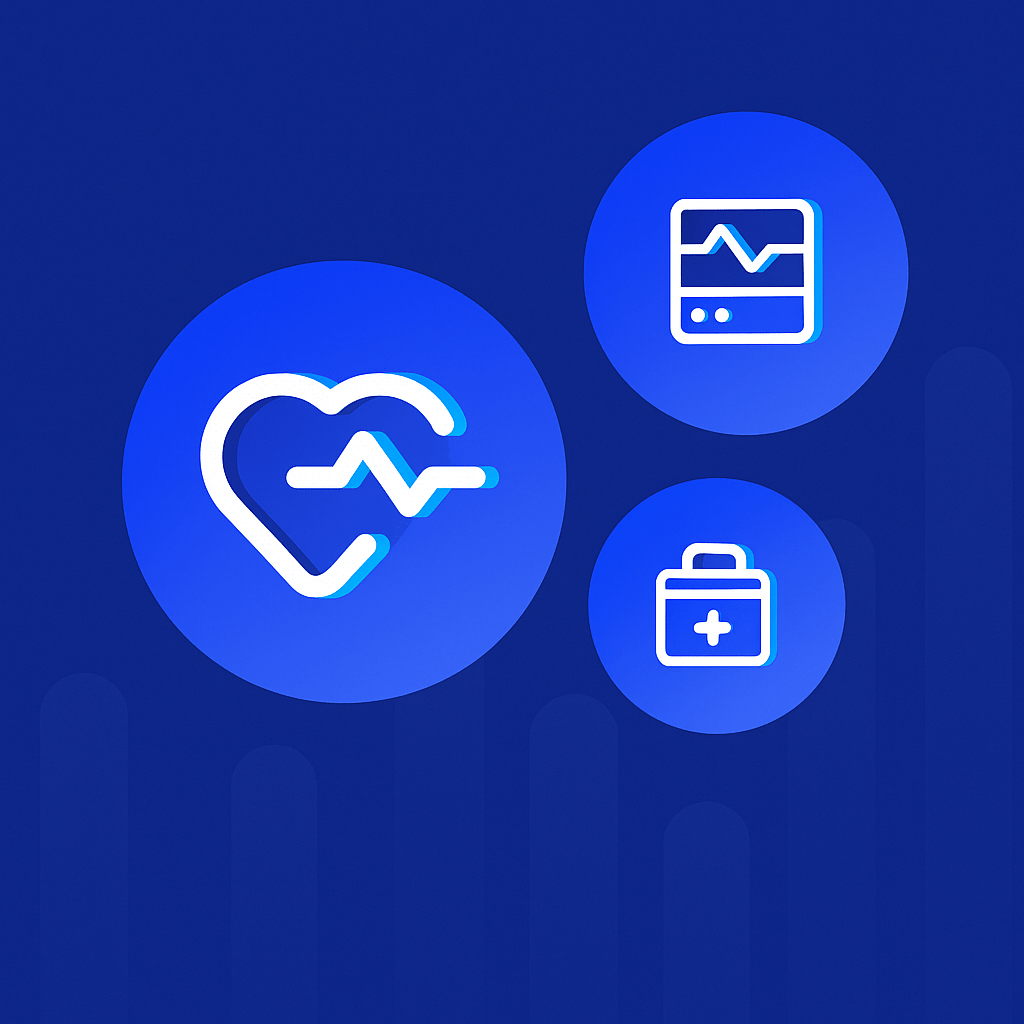
7 Website Problems That Cost Healthcare Brands Conversions
Key takeaways
Every business or organization today needs a properly optimized website, and the healthcare space is no exception. It’s there to provide information, services, and resources to patients or other organizations.
However, healthcare website problems are prevalent today as many organizations in the space either fail to understand their importance or are too consumed with day-to-day operations and the need for growth. The problem here is that website issues hinder all of this.
If you want to improve your website and increase conversions, it’s crucial to understand the biggest problems that might be plaguing your site and what you can do to solve them. Let’s have a look.
1. Slow Load Times and Poor Mobile Optimization
Slow load times and bad mobile optimization are by far the biggest issues any website can have, including a healthcare site. It impacts trust and accessibility, ultimately leading to fewer people choosing your brand and opting for a competitor.
If a website takes more than 3 seconds, as many as 40% of visitors, and 53% of mobile users are going to leave it. That’s effectively half of your potential conversions.
Besides what the people will do, there’s also the fact that Google will not prioritize a slow and poorly mobile-optimized site. In fact, these are the two biggest reasons why Google will downplay your site in the rankings.
To see how that looks, imagine a pharmaceutical company with a resource section on its site. It did a great job of including a lot of relevant and useful information, but it failed to optimize the section, meaning:
- Each page loads slowly.
- Most pages look incredibly clunky on the phone.
- There are bugs in interactive elements.
- Pages aren’t optimized for the small screen.
Once a patient with a newly diagnosed condition wants to check the site for answers, the problems I’ve outlined will eventually make them abandon it for a new site, costing the organization a potential conversion.
{{cta}}
2. Confusing Navigation and User Experience (UX)
If navigation on your site is confusing to the visitor and the rest of the site has weak UX, most visitors will quickly get frustrated with your website. Consequently, this will cost you conversions.
But what exactly is bad user experience and confusing navigation? Confusing navigation usually means:
- There are too many options in the main menu.
- Section names are confusing and contain a lot of medical jargon and abstract terms that regular people don’t understand.
- The search function is poorly designed, making it difficult to find results on the site.
- There are inconsistencies in menus that look different on different pages, and their organization is all over the place.
As for bad UX, this commonly includes:
- Too much text or data without visual breaks, bullet points, and headings.
- Too many pop-ups and elements cover the main page section.
- Lack of clear CTAs that tell the user what they should do next.
- Lots of 404 errors due to missing pages and broken links.
- Inconsistent design where pages look too different from each other.
Imagine a dental clinic with a site that has some or most of these issues. It offers a lot of valuable services, but it displays them with a lot of medical jargon that means little to the patient, so they can’t find the service they are looking for, even though it’s actually there.
To see things like these in action, check our blog on the best examples of bad vs good UX website designs.
3. Outdated Design That Undermines Trust
Outdated design might seem like bad optics only, but it’s so much more. It undermines credibility and professionalism, but most of all, it undermines the trust people place in your brand.
Outdated website designs tend to feature:
- Inconsistent branding through different logos, colors, and fonts across different pages
- Small or hard-to-read fonts
- Low amount of white space between content and other elements
- Low-quality or generic stock images
- Reliance on outdated technologies like Flash
- Only a handful of modern interactive elements
So, imagine a site for a private therapist that uses a free and elementary template on WordPress. Besides design issues, these types of setups often suffer from recurring backend problems like WordPress database connection errors. The site features low-resolution images, various font styles, and a generic contact form that resembles a spammy site more than a professional one. Once a visitor sees all of this, it’s an immediate red flag that makes them question the quality of the therapist’s services. The poor design quickly puts them off, so they decide to search for a different therapist.
The problem in this example is that this will happen many times over, costing the therapist potential clients, making them rely solely on word-of-mouth marketing.
4. Lack of Clear Conversion Paths
The goal of conversion paths is to effectively guide every visitor to the next step you want them to take, be it booking an appointment, looking for care, or simply asking for information. However, you need to do it in a way that’s effortless for them.
Without clear conversion paths, namely CTAs and forms, you can’t do it properly. Many healthcare websites make the mistake of having weak CTAs or none at all, and forms that are too complicated for the average visitor.
- Missing a CTA is a massive mistake, one that needs no elaboration.
- A weak CTA is one that:
- Uses generic language like Submit and Click Here.
- Is poorly placed in the sense that it’s not in the reader’s eyesight.
- Lacks visuals that make it stand out from the rest of the content.
- Has to “compete” with too many other CTAs on the page.
- An overly complicated form is one that:
- Asks too much information too soon.
- Has bad formatting, like no breaks and small fields.
- Doesn’t clearly state that submissions are secure and stay private.
- Doesn’t have clear instructions on what the visitor should provide.
Consider an urgent care center with a lengthy registration form featuring small fields, all of which are displayed on a single page that doesn’t render correctly. A patient or parent of a child who requires urgent care is there to get help quickly. A complex form like this one will dissuade most people, causing them to search elsewhere.
5. Non-Compliant or Inaccessible Design
Inaccessible and especially non-compliant design is not just a problem for conversions, but can also become a legal issue that might result in legal action, fines, and a massive hit to your brand’s reputation.
This problem usually has two crucial parts: HIPAA and data privacy concerns, and accessibility (ADA) oversights.
HIPAA and Data Privacy Concerns
The Health Insurance Portability and Accountability Act (HIPAA) has strict security and privacy rules about healthcare information. This means that:
- Pages where people add protected health information have to be encrypted, and it’s easy to miss some. The same goes for forms, portals, chats, and even integrations.
- Hosting must be HIPAA compliant, and some healthcare websites overlook this.
- A privacy policy has to be clear and easy to understand, and it’s easy to miss the mark here.
- Analytics need to be HIPAA compliant, which is another thing that’s easy to miss.
- Every employee who’s on the backend of the site or pages with sensitive info has to be properly trained, which is often overlooked.
Accessibility (ADA) Oversights
The Americans with Disabilities Act (ADA) states that sites need to provide access to people with disabilities. The Web Content Accessibility Guidelines (WCAG) are there to ensure this.
Some healthcare organizations fail to properly optimize their websites, largely because there are many factors to consider. Some common mistakes include:
- Images without proper alt texts.
- No way for the user to navigate the site with just a keyboard.
- Text and visuals aren’t designed for people with color blindness or poor vision.
- Some or all audio and video lack captions or transcripts.
- Content that flashes three or more times per second, which can cause seizures.
6. SEO and Content Gaps That Limit Visibility
SEO and content gaps lead to your website appearing less in the search results, i.e. not meeting its full potential. This also means that your brand can’t become the trusted authority it can be.
This problem is usually seen in two highly connected areas:
- Lack of educational content for buyers or patients. This is a B2B healthcare website that doesn’t have content covering clinical questions, research, the referral process, or advanced treatment protocols. It’s also a patient-centric site that lacks simply written blog posts, FAQs, or guides about conditions, symptoms, and treatment options.
- Poor metadata and technical SEO. When it comes to metadata, many websites miss out on creating clickable title tags and meta descriptions. As for technical SEO, the most common mistakes are poor or non-existent keyword optimization, internal linking, canonical tags, schema markups, XML sitemaps, and Core Web Vitals.
These issues lead to missed organic traffic and all the other problems that stem from this, including lower conversion rates. Any healthcare organization with problems like these simply won’t rank highly and will not get enough visitors, regardless of how good its services are.
7. Fragmented Tech Stack and Integration Issues
This problem is not really seen by the site visitors, but the effects it creates result in a poor experience that leads to fewer conversions.
In essence, a fragmented tech stack is when the healthcare website uses too many software systems that don’t work together properly. This usually includes systems like a patient portal, analytics, billing, and scheduling. When these systems fail to communicate correctly, data gets siloed, and processes need to become manual. The same happens if your website uses several integrations that don’t operate adequately as a whole. To prevent this, scan your Webflow website regularly to diagnose performance issues and address them proactively.
How does this look in practice? For instance, the user’s journey becomes riddled with frictions that lead many of them to abandon the process. Administrative costs become higher because employees spend more time on manual tasks. Even analytics become less accurate, meaning you can’t optimize your spending.
How Healthcare Brands Can Solve These Issues
You can always address each of these problems individually, but you can also take a more unified approach that results in some of the best healthcare website examples. With the latter, the main things you need to do are use the right website builder and take a conversion-driven approach to design and SEO.
Platform Choice
You need an all-in-one solution that will make it easy to build and launch a website or landing page, be it on your own or with the help of professionals like Flow Ninja.
We recommend Webflow, not only because that’s where our specialty lies, but because this is the all-in-one website experience platform that enables you to solve all the healthcare website problems I’ve told you about in this blog.
- Webflow is made for creating fast-performance sites.
- You can easily create sites with highly responsive design. You can start by prototyping layouts in Figma before moving them into Webflow.
- Webflow allows for clear CTAs.
- Webflow is great for building a quality resource center.
- You can easily create user-friendly navigation systems.
- You get to tamper with the smallest of details on your site.
Conversion-Driven Design and SEO
Naturally, using Webflow is not a solution in and of itself. You still need to have the right approach to website building, a key reason to consider hiring a Webflow agency. In our years of experience, we’ve realized that the best strategy for a healthcare brand is focusing on design and SEO practices that drive conversions.
But what does this entail? This requires a lot more details we can’t get into now, but here’s a simplified look:
- High-quality and trust-invoking visuals like testimonials, success stories, and employee bios.
- Intuitive forms that are simplified to get as much information as needed without overwhelming the user.
- Clear and to-the-point CTAs that are prominently displayed, easy to find, and geared towards the benefits your patients or clients can receive.
- Optimized landing pages made for specific campaigns. They need to be oriented toward that campaign only and free from other unnecessary content.
- Local SEO optimization where your Google Business Profile uses correct and current data, and the website is optimized for local keywords or has dedicated pages for it.
- A solid technical SEO foundation that covers tactics for improving loading speeds, mobile-friendliness, creating clear site structures and XML sitemaps, optimizing alt texts on images, and properly using metas.
- Detailed content strategy that revolves around the creation of informative and quality content like blog posts, service pages, educational resources, FAQs, and more.
{{cta}}
Turning Healthcare Website Problems Into Growth Opportunities
As you can see, even though these are major website problems that ruin conversions and growth, they can be fixed. What’s more, a strong healthcare website design and development agency can fix them with ease, effectively turning them into growth opportunities for your brand.
Flow Ninja can be the agency that transforms your website into a growth machine. If you need help fixing these issues and scaling your site, reach out to us so we can see together how to improve your healthcare website.






.svg)













.png)
.png)
.png)








.svg)

.png)
.png)
.webp)
.svg)

